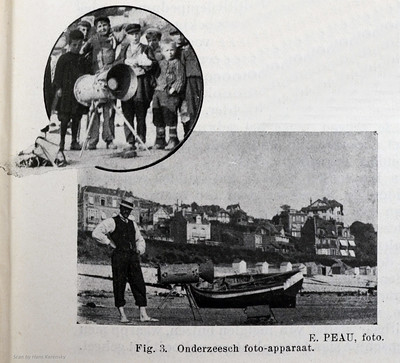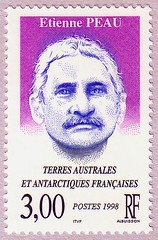Difference between revisions of "Étienne Peau"
(mo' caption) |
m (Corrected heading) |
||
| Line 41: | Line 41: | ||
The mountain ''Mont Étienne Peau'' near Port Élisabeth on Kerguelen Island is named after the scientist. | The mountain ''Mont Étienne Peau'' near Port Élisabeth on Kerguelen Island is named after the scientist. | ||
| − | {{ | + | {{br}} |
| − | + | ==Sources== | |
*[https://gghsm.forumpro.fr/t4094-le-havre-rue-etienne-peau about name-giver of Le Havre's ''Rue Etienne-Peau''] in website of ''Groupement Généalogique du Havre et de Seine-Maritime'' [https://gghsm.forumpro.fr/] | *[https://gghsm.forumpro.fr/t4094-le-havre-rue-etienne-peau about name-giver of Le Havre's ''Rue Etienne-Peau''] in website of ''Groupement Généalogique du Havre et de Seine-Maritime'' [https://gghsm.forumpro.fr/] | ||
Latest revision as of 07:26, 12 May 2022

|
| scanned by Hans Kerensky |

|
| scanned by Hans Kerensky |

|
| camera details A) intermediate part with lens, shutter and further parts B) chassis with magazine for five 13×18cm film plates and plate-exchange mechanism (maybe like that of a magazine camera) scanned by Hans Kerensky |

|
| scanned by Hans Kerensky |

|
| scanned by Uwe Kulick |
Étienne Peau was a French pioneer of underwater photography, born 1877 in Le Havre, were he also attended school and made his career as oceanographic scientist and a curator of the local museum of natural history. After having studied the first book about underwater photography, written in 1900 by the American underwater photography pioneer Louis Boutan, Peau himself constructed a remote-triggered underwater camera for himself. In 1907 Peau made the first underwater shots of The Channel. For diving he constructed a new autonomous rigid diving suit and an emergency air compressor. In 1908 he wrote about his underwater photography efforts. The b/w images on this page show excerpts from the Dutch translation of his article. In 1923/24 he traveled to the sub-antarctic Kerguelen island - his travel reports lead to laws to reduce bad practices of whaleboats and laws to avoid the distinction of sea elephants. After his museum job he became journalist. In 1940 he died on a ship because it was attacked and destroyed by the Germans.
The mountain Mont Étienne Peau near Port Élisabeth on Kerguelen Island is named after the scientist.
Sources
- about name-giver of Le Havre's Rue Etienne-Peau in website of Groupement Généalogique du Havre et de Seine-Maritime [1]